How to Make Ancho Peppers
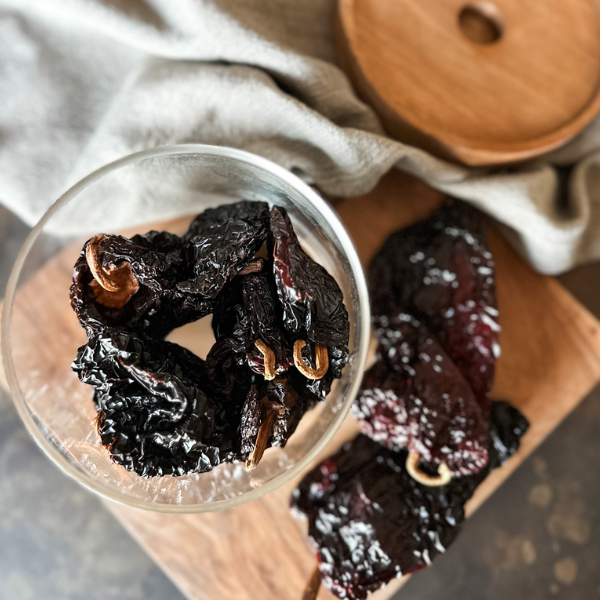
This post may contain affiliate links, which means I make a small commission at no extra cost to you.
See my full disclosure here.
How to Make Ancho Peppers
If you’ve ever tasted the deep, smoky-sweet flavor of an ancho pepper in a good chili or mole, you know it’s something special.
Anchos are a staple in many Mexican dishes, lending a mild heat and rich complexity to sauces, soups, and stews. These specialty peppers are one of my favorite ways to preserve the harvest—and they start with something as simple as a humble poblano.
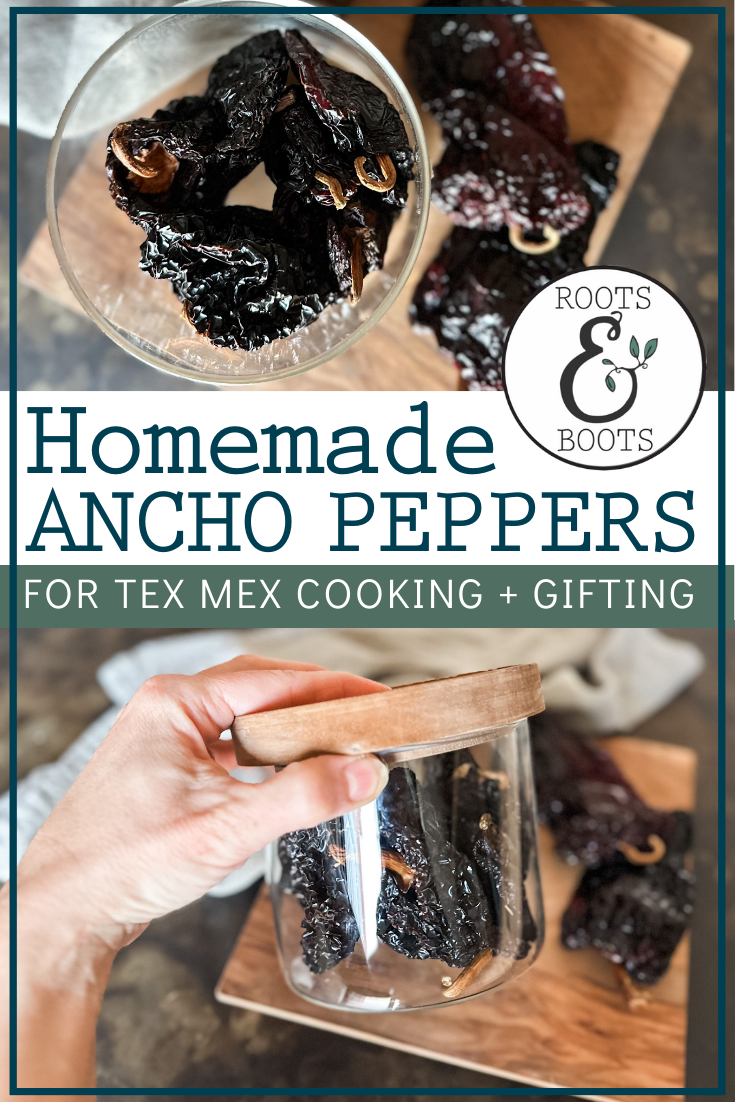
What Is an Ancho Pepper?
Ancho means “wide” in Spanish, a nod to the broad-shouldered shape of the poblano pepper. When harvested green, poblanos are perfect for recipes like our family-favorite Shortcut Pork Carnitas, Chicken Taco Soup Starter, or the Creamy Chicken Poblano Soup from my Nourishing Soups ebook.
But if you let those poblanos ripen fully on the plant until they turn a deep red, you’re on your way to learning how to make ancho peppers.
Once ripened, the peppers are roasted or smoked and then dried. That’s it. The result is a wrinkled, dark red pepper with a sweet, earthy flavor and just a touch of heat—perfect for grinding into powder or rehydrating for sauces.
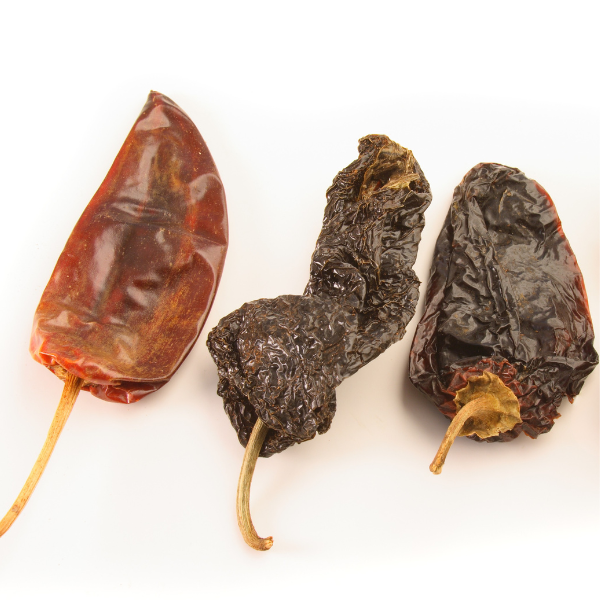
Why Make Your Own?
You can sometimes find dried anchos at farmers markets, specialty grocers, or even online. But if you grow your own poblanos (and I highly recommend it—they’re easy and prolific), learning how to make ancho peppers becomes a natural extension of the garden-to-table rhythm.
Homemade anchos have a depth that store-bought versions often lack. I like to smoke ours for an extra layer of richness, and the aroma alone is worth the effort.
How to Make Ancho Peppers at Home
Here’s how I do it, step by step:
Note that the stems and seeds can be removed from the fresh peppers before the smoking and drying process or from the dried peppers before cooking with them. If removing them beforehand, follow these instructions for the easiest way to deseed a pepper. If removing them after drying, simply use kitchen scissors to clip off the stem. Then break the pepper and shake out the seeds.
1. Let Poblanos Ripen on the Plant
Leave your poblano peppers on the plant until they turn fully red. This can take several weeks beyond the green harvest window. The skin will deepen in color and the flesh will soften slightly.
Tip: Keep an eye out for soft spots or blemishes. You want firm, healthy peppers for drying.
2. Smoke (Optional, but Recommended)
I love the added depth that smoking brings to these ancho peppers.
Our smoker is the Daniel Boone model from Green Mountain Grills, which may be discontinued. This one looks similar and is available on Amazon. There is also this brand, which is highly rated and raved about online. Whichever brand or model you choose, my husband recommends a smoker powered by wood pellets.
- Set your smoker to a low temperature (around 150–180°F).
- Use a mild wood like apple or cherry.
- I like to load the peppers into a metal grill basket, arranging them in a single layer. This allows the smoke to surround the peppers on all sides.
- Smoke the peppers for 2–3 hours, until they’re fragrant and beginning to shrivel.
If you don’t have a smoker, you can roast them in the oven at a low temp or skip this step and go straight to drying.
3. Dry the Peppers
After smoking, transfer the peppers to a dehydrator. Set it to 125–135°F and dry until the peppers are fully crisp—this usually takes 12–24 hours depending on size and moisture content.
I’ve used this dehydrator for almost ten years and it’s still going strong.
Tip: No dehydrator? You can use your oven on its lowest setting with the door cracked open, but it may take longer and require more babysitting.
5. Store and Use
Once fully dried, store your anchos in an airtight jar or vacuum-sealed* bag in a cool, dark place. They’ll keep for months and are ready to use in:
- Chili (like the one I made last week—so good!)
- Enchilada sauce
- Mole
- Pozole
- Any dish that needs a warm, smoky backbone
You can rehydrate them in hot water, blend them into sauces, or grind them into powder for your own homemade chili seasoning.
*Save 10% on vacuum sealers with code ROOTSBOOTS.
Anchos as Gifts
Homemade ancho peppers make a thoughtful gift for the cooks in your life. Their deep red color and rustic charm look beautiful tucked into a pantry basket alongside jars of homemade seasoning blends, local honey, or a loaf of sourdough.
You might package them in a small glass jar with a handwritten label or add them to a holiday gift basket for a friend who loves to experiment in the kitchen. Sharing your own anchos is a way of passing along both flavor and tradition.
Homemade anchos are one of those quiet pantry wins—easy to make, endlessly useful, and deeply satisfying. If you’ve got a patch of poblanos growing out back, give it a try. Your winter soups and stews will thank you, and your friends will love receiving them as gifts.
22 NOURISHING GLUTEN-FREE SOUP RECIPES
Simplify your dinner prep with these tasty, nourishing soups!

Sign up NOW for my best tips delivered weekly to your inbox!
You’ll also get instant access to my library of free ebooks and resources.




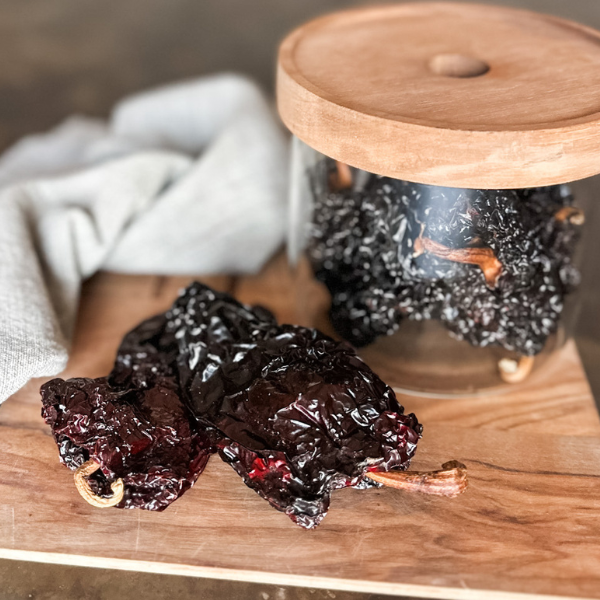


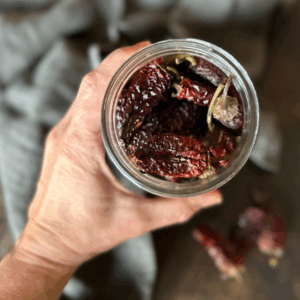
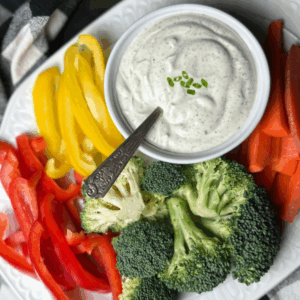
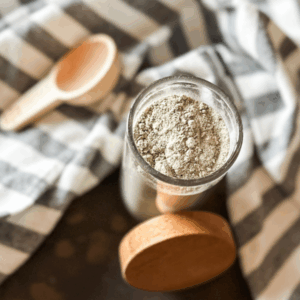
Leave a Comment